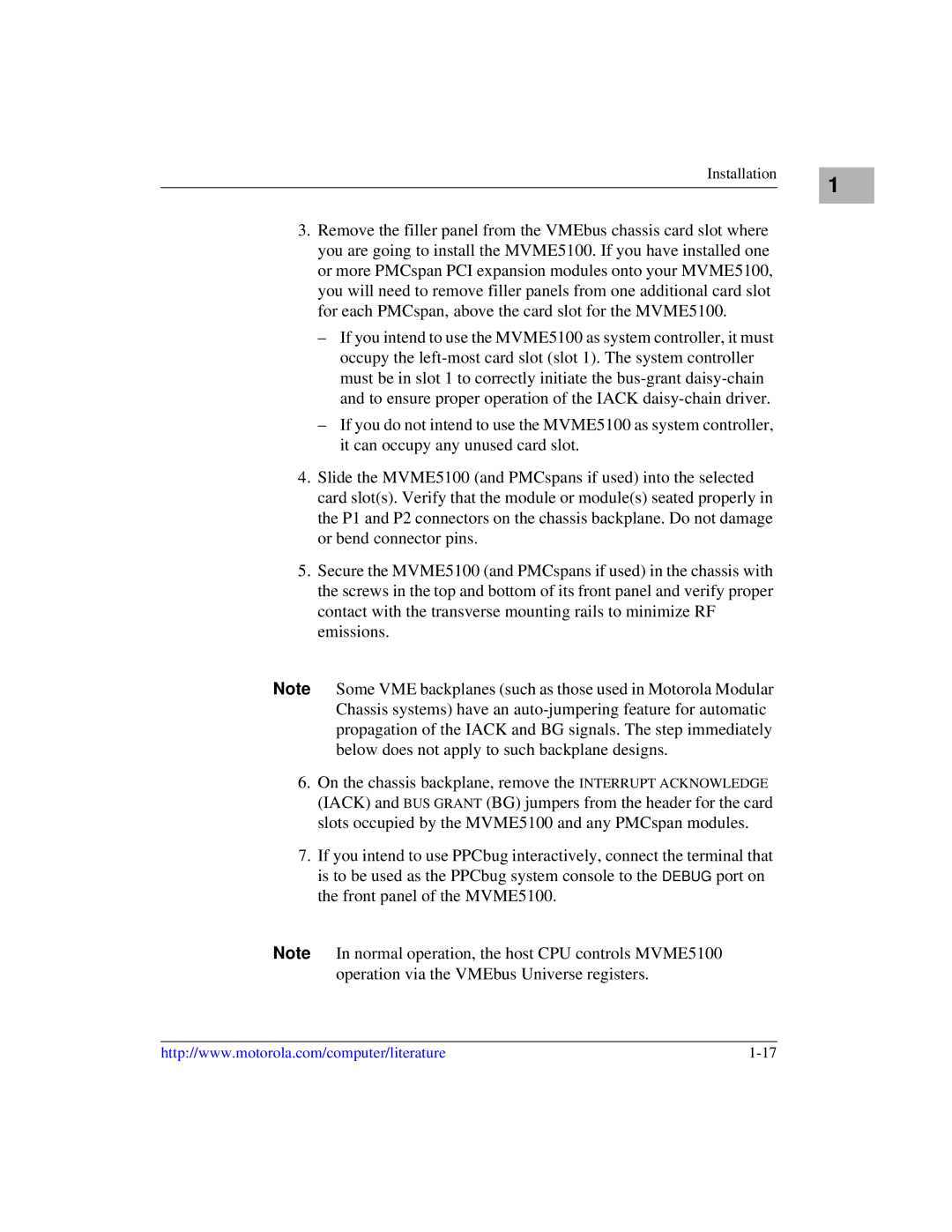
Installation
3.Remove the filler panel from the VMEbus chassis card slot where you are going to install the MVME5100. If you have installed one or more PMCspan PCI expansion modules onto your MVME5100, you will need to remove filler panels from one additional card slot for each PMCspan, above the card slot for the MVME5100.
–If you intend to use the MVME5100 as system controller, it must occupy the
–If you do not intend to use the MVME5100 as system controller, it can occupy any unused card slot.
4.Slide the MVME5100 (and PMCspans if used) into the selected card slot(s). Verify that the module or module(s) seated properly in the P1 and P2 connectors on the chassis backplane. Do not damage or bend connector pins.
5.Secure the MVME5100 (and PMCspans if used) in the chassis with the screws in the top and bottom of its front panel and verify proper contact with the transverse mounting rails to minimize RF emissions.
Note Some VME backplanes (such as those used in Motorola Modular Chassis systems) have an
6.On the chassis backplane, remove the INTERRUPT ACKNOWLEDGE (IACK) and BUS GRANT (BG) jumpers from the header for the card slots occupied by the MVME5100 and any PMCspan modules.
7.If you intend to use PPCbug interactively, connect the terminal that is to be used as the PPCbug system console to the DEBUG port on the front panel of the MVME5100.
Note In normal operation, the host CPU controls MVME5100 operation via the VMEbus Universe registers.
1
http://www.motorola.com/computer/literature |
